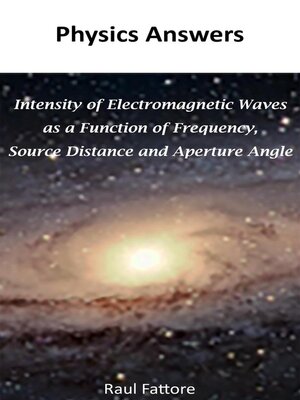Intensity of Electromagnetic Waves as a Function of Frequency, Source Distance and Aperture Angle
ebook
By Raul Fattore

Sign up to save your library
With an OverDrive account, you can save your favorite libraries for at-a-glance information about availability. Find out more about OverDrive accounts.
Find this title in Libby, the library reading app by OverDrive.



Search for a digital library with this title
Title found at these libraries:
| Library Name | Distance |
|---|---|
| Loading... |
Intensity of Electromagnetic Waves as a function of frequency is usually not treated by the scientific community.
The energy transport in Electromagnetic Waves (EMW) calculated by means of the Poynting vector formula, might not yield to correct results, because it only gives an average energy on a surface. There is no reference about the volumetric energy distribution at a distance from the source, nor to the frequency of the EMW.
How can the intensity of EMW be written in terms of frequency and distance to the source?
How to calculate the volumetric energy of EMW?
How does the intensity change with the aperture angle (solid angle of a cone in space) from the source?
How to relate intensity with frequency, area, and aperture angle in one equation?
How to obtain the wave equation of the interference caused by slit diffraction to compute the Intensity?
In this study, you'll find the answers to the questions above and learn that the result obtained here agrees to the famous Planck equation (E=h f ). Moreover, a wave equation for the interference pattern produced by slit diffraction is obtained, but calculation of pattern intensities is left for you with the given formulas.







